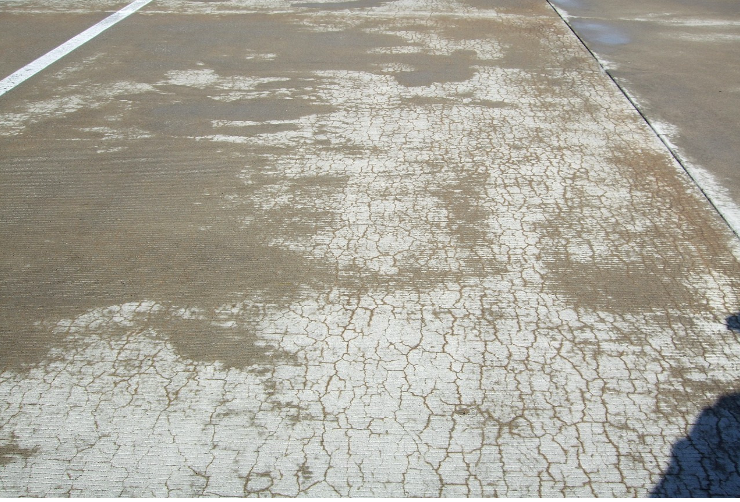ASR
✩
ASR ✩
Application Note
ASR Concrete Protection | Stop Alkali-Silica Reaction & Strengthen Structures

The Problem: Alkali-Silica Reaction (ASR) & Structural Weakening
Alkali-Silica Reaction (ASR) causes expansion, cracking, and loss of strength in concrete, leading to surface deterioration, increased porosity, and reduced load-bearing capacity. Moisture accelerates ASR, making structures more vulnerable to long-term damage.
The Solution: Surtreat’s ASR Mitigation & Concrete Strengthening System
Surtreat provides a multi-step system to inhibit ASR, strengthen concrete, and prevent further deterioration:
- TPS XVII: ASR inhibitor that neutralizes expansive reactions and prevents new ASR formation.
- TPS XVIII: Lithium silicate densifier that strengthens concrete and seals micro-cracks.
- SurCoat: Cementitious repair system that restores surface integrity and prevents moisture ingress.
- Repel WB: Silane/siloxane water repellent that creates a hydrophobic barrier against future moisture damage.
Application Process: How to Treat & Prevent ASR Damage
Step 1: Surface Cleaning
- Remove debris, dirt, and coatings to allow penetration of treatment.
- Ensure exposed rebar is free of corrosion for optimal bonding.
Step 2: Apply TPS XVII
- Apply TPS XVII to neutralize ASR expansion and halt future chemical reactions.
- Ensures lithium ion concentration reaches the cement phase.
Step 3: Apply TPS XVIII
- Apply TPS XVIII to strengthen the concrete matrix, seal cracks, and reduce porosity.
- Improves durability, reducing the likelihood of future ASR-related damage.
Step 4: Repair with SurCoat
- Use SurCoat to seal larger cracks and restore surface integrity.
- Forms a durable, moisture-resistant finish to protect against environmental exposure.
Step 5: Apply Repel WB
- Final application of Repel WB creates a hydrophobic barrier against moisture infiltration.
- Reduces freeze-thaw damage and minimizes future maintenance needs.
Results: Why Surtreat’s ASR Protection System Works
✅ Neutralized ASR Expansion – Stops ongoing ASR reaction, preventing further damage.
✅ Strengthened Concrete – TPS XVIII increases compressive strength and durability.
✅ Sealed & Repaired Cracks – SurCoat restores surface integrity and prevents moisture infiltration.
✅ Superior Moisture Protection – Repel WB creates a long-lasting hydrophobic barrier.
✅ Cost-Effective ASR Mitigation – Reduces the need for costly demolition and reconstruction.
Looking for something else?
Check out our Applications Page for more solutions.
Need expert guidance? Contact Surtreat today to discuss your project needs.
